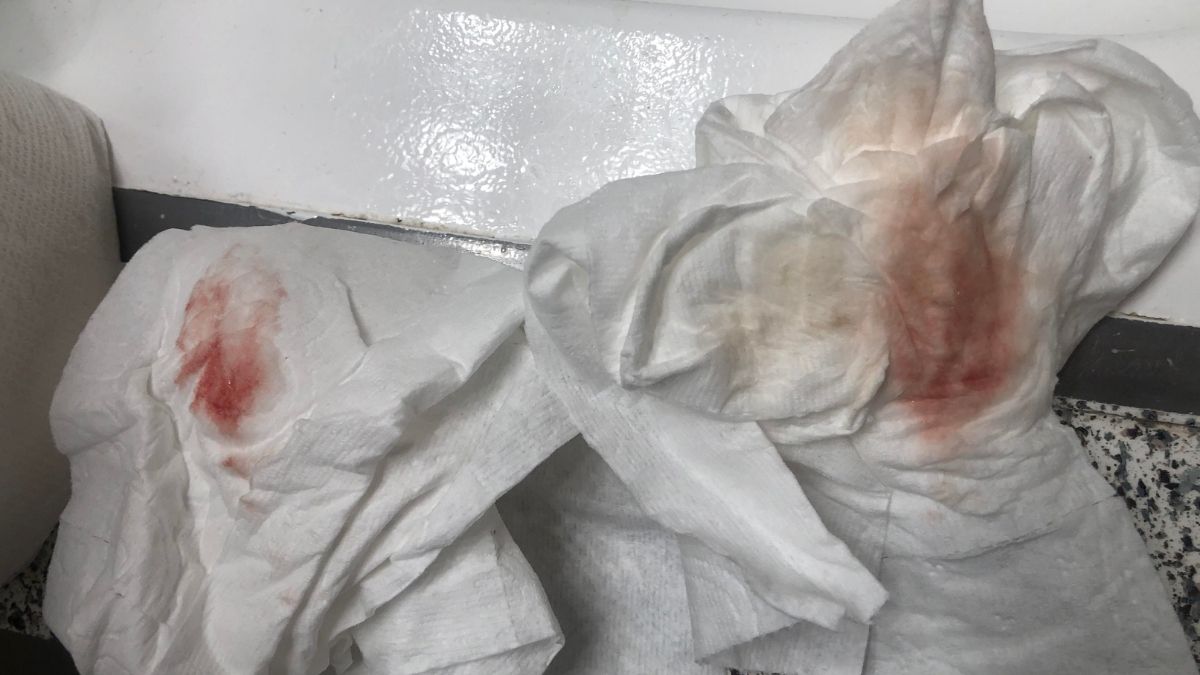How quickly does mucus plug regenerate? Discover how quickly the mucus plug regenerates and what steps to take. Learn about this vital aspect of pregnancy and ensure a safe journey for you and your baby with mucusplug.net!
How quickly does mucus plug regenerate?

The mucus plug, also known as the cervical mucus plug, is a protective barrier in the cervix that helps prevent infections from entering the uterus during pregnancy. It is typically expelled as a thick, gel-like substance in the days or weeks leading up to labor, signaling that the body is preparing for childbirth.
Once the mucus plug is expelled, it can regenerate. However, the rate at which it regenerates can vary from person to person. In some cases, it can reform relatively quickly, within a few hours or days. In other cases, it may take longer, especially if the cervix is not yet dilated or if labor is not imminent. The regeneration of the mucus plug is a natural and ongoing process during pregnancy to help protect the developing fetus.
It’s important to note that the regeneration of the mucus plug is a normal part of pregnancy, and the timing and frequency can vary. If you have concerns about your mucus plug or are experiencing any unusual symptoms during pregnancy, it’s always a good idea to consult with your healthcare provider for guidance and reassurance.
How fast do you deliver after losing mucus plug?

The timeline for when a mucus plug dislodges and labor begins can vary widely from one pregnancy to another, and it’s essential to understand the range of possibilities. The mucus plug, a gelatinous substance that seals off the cervix to protect the uterus and developing fetus, may dislodge several days before labor initiation, but in some cases, it could occur as early as one to two weeks before the onset of labor. This early dislodgment doesn’t necessarily mean that labor will commence immediately, as it’s just one of the preliminary signs that the body is preparing for childbirth.
On the other hand, some pregnancies play a waiting game, and the mucus plug might remain intact until the very last moment, just before labor begins. In such instances, it can serve as a clear signal that your body is finally ready to start the labor process. This wide range of possibilities highlights the uniqueness of each pregnancy and underscores the importance of being patient and attentive to your body’s signals.
The timing of mucus plug loss should not be cause for undue worry. It’s merely one piece of the puzzle, and there are many other factors involved in the complex process of labor initiation. To ensure that you have a clear understanding of what’s happening in your particular case, it’s advisable to reach out to your healthcare provider with any questions or concerns you may have. They can provide you with personalized guidance and monitor your progress to ensure both you and your baby are safe and healthy throughout this transformative journey.
>Related post: Is it safe to have sex after losing mucus plug?
What should I avoid after losing my mucus plug?

After losing your mucus plug during pregnancy, it’s essential to remain vigilant about certain precautions. This protective barrier, often called the mucus plug, seals the cervix and provides a degree of protection against infection. If you find yourself in the situation where you’ve lost your mucus plug, there are a few key considerations to keep in mind.
First and foremost, the timing of mucus plug loss is crucial. Typically, it’s considered normal for the mucus plug to dislodge as you approach full-term pregnancy, around 37 weeks and beyond. If this happens earlier, it might be a sign that something is amiss, and you should contact your healthcare provider immediately.
The appearance of the mucus plug is also worth noting. While it can have a small amount of blood, excessive bleeding or a bright red color might indicate a potential problem. If you observe such signs, it’s essential to consult your healthcare provider to rule out any complications.
Furthermore, the state of your amniotic sac is a vital consideration. If your water hasn’t broken, you’re likely in a safe zone. However, if your water does break after losing the mucus plug, it’s a sign that you should contact your healthcare provider right away, as it may indicate the start of labor.
In general, as long as you’re over 37 weeks pregnant, the mucus plug isn’t excessively bloody, and your waters haven’t broken, you can continue your daily activities as you have throughout late pregnancy. Nevertheless, always keep an eye out for any unusual symptoms or signs that might suggest complications, and don’t hesitate to reach out to your healthcare provider for guidance and reassurance during this crucial period.
How do you progress after losing your mucus plug?

Losing your mucus plug can be a significant event during pregnancy, signaling that your body is preparing for labor. When this happens, especially if you are full term, it can leave you with a mix of excitement and uncertainty. Let’s explore the process and what you should do next in greater detail.
The mucus plug, also known as the cervical mucus plug, is a thick, jelly-like substance that seals off the cervix during pregnancy to protect the womb from infection. It can be expelled from the body in the days or weeks leading up to labor, and its loss is a promising sign that your body is making progress towards childbirth. The mucus plug may come out all at once or in smaller pieces over time.
When you notice the mucus plug coming out, it’s essential to keep a few things in mind. If you are at full term (typically around 37 weeks or later), it’s generally a positive indicator that labor could be imminent. However, it’s not an immediate emergency, and there is no need to rush to the hospital right away. Instead, take a moment to monitor your symptoms and observe any changes in your body.
In most cases, it’s advisable to wait until you’re experiencing regular and frequent contractions before contacting your midwife or healthcare provider. These contractions, often described as feeling like strong menstrual cramps, are a clear sign that labor is underway. However, if you’re feeling anxious or concerned, don’t hesitate to reach out to your healthcare provider for reassurance. They are there to answer your questions and provide guidance during this important time.
It’s important to note that the loss of the mucus plug doesn’t guarantee that labor will start immediately. Some individuals may continue to carry on for days or even weeks before labor officially begins. If you find that labor doesn’t start after losing your mucus plug, you should still mention it at your next prenatal appointment or assessment. Your healthcare provider can assess your overall progress and discuss potential next steps. They may consider inducing labor if necessary, or they might recommend additional monitoring to ensure the well-being of both you and your baby.
In summary, the loss of the mucus plug is a positive indication that labor is approaching, but it’s not a strict timetable. It’s important to pay attention to your body, monitor any contractions, and reach out to your healthcare provider for guidance when needed. They will help you navigate this exciting and sometimes uncertain phase as you prepare to welcome your new baby into the world.
>Related post: How big is the mucus plug in pregnancy?
Do you lose mucus plug for days?

Is it possible to lose the mucus plug over the course of several days or even weeks? Well, the answer is yes. In the journey of pregnancy, every woman’s experience is unique, and this holds true for the loss of the mucus plug as well. While some women might notice the abrupt passage of their mucus plug in one instance, others may experience a more gradual process that can occur over the final days or weeks of their pregnancy.
This gradual loss of the mucus plug is entirely normal and doesn’t necessarily indicate anything out of the ordinary. It’s just one of the many variations in how a woman’s body prepares for childbirth. The mucus plug, a jelly-like substance that seals the cervix during pregnancy, can be released gradually as the cervix begins to soften and dilate in preparation for labor. This can manifest as smaller, intermittent amounts of mucus rather than a single noticeable chunk.
If you’re getting closer to your due date and haven’t observed the loss of your mucus plug, there’s no need to be overly concerned. It’s important to remember that pregnancy and childbirth can vary widely from one person to another. Losing the mucus plug at a slower pace doesn’t necessarily indicate any issues with the progression of your pregnancy. It’s just one of the many ways your body prepares for the arrival of your baby.
If you have any concerns or questions about this or any other aspect of your pregnancy, don’t hesitate to reach out to your healthcare provider for guidance and reassurance. They are there to support and address any worries you may have as you approach the exciting journey of childbirth.
>Related post: Is mucus plug brown?
How much mucus plug is normal?

The amount and appearance of a mucus plug can vary among individuals, and it’s important to understand that it’s a natural part of the pregnancy process. The mucus plug is often described as clumpy and typically has a brownish color due to the presence of older blood. This brownish tinge is completely normal and not a cause for concern.
As the cervix prepares for childbirth, some women might notice new, bright red blood mixed in with the mucus plug. This can happen as the cervix begins to thin and open, which is one of the early signs of labor. It’s essential to monitor any bleeding during pregnancy and consult with a healthcare provider to ensure that everything is progressing as expected.
In terms of texture, the mucus plug is usually described as sticky, but it can also be somewhat stringy. The consistency can vary, and it might be stretchy or have a gel-like quality for some women. This variety in texture is typical and not a cause for concern.
In general, the average size of a mucus plug is estimated to be about one ounce, which is roughly equivalent to two tablespoons. However, it’s important to note that there is considerable variability in size, and some women might have larger or smaller mucus plugs.
Remember that the mucus plug serves as a protective barrier during pregnancy, helping to block the entry of bacteria into the uterus. As labor approaches and the cervix begins to change, it is normal for the mucus plug to be expelled. If you have concerns or questions about the mucus plug or any other aspects of pregnancy, it is advisable to seek guidance from a healthcare professional who can provide you with personalized information and support.
Do you get more discharge after losing mucus plug?

In the final stages of pregnancy, a remarkable and fascinating event known as the “mucus plug” plays a crucial role in the lead-up to childbirth. The mucus plug is a protective barrier of thick, gel-like mucus that seals off the cervix during pregnancy, preventing harmful bacteria from entering the uterus and potentially harming the developing fetus. As the due date approaches, you might experience a significant change in your vaginal discharge, a phenomenon directly related to the mucus plug’s functions.
As your body prepares for labor, the mucus plug begins to change. It might slowly dislodge and push its way out of your cervix and into your vagina, which can be quite noticeable. This process typically occurs during the late third trimester, serving as one of the early signs that your body is gearing up for childbirth.
The mucus plug can vary in color and consistency. It can appear clear, tinged with pink, or even slightly bloody. This change in your vaginal discharge is often referred to as “bloody show” and can happen days or even weeks before labor starts or may coincide with the beginning of labor itself.
It’s important to note that the loss of the mucus plug is a natural and expected part of the pre-labor process. While it’s a sign that your body is preparing for childbirth, it doesn’t necessarily indicate that labor will start immediately. Every pregnancy is unique, and the timing can vary.
However, it’s a reassuring signal that your body is taking the necessary steps to welcome your new arrival into the world. If you ever have any concerns about changes in your vaginal discharge or other pregnancy-related symptoms, it’s advisable to consult with your healthcare provider for guidance and reassurance during this exciting and crucial time.
Can I take a bath after losing my mucus plug?

After the expulsion of your mucus plug, many expectant mothers often wonder about the safety of various activities, such as taking a bath. It’s essential to understand that losing the mucus plug is a natural part of the labor process, indicating that your body is preparing for childbirth. The mucus plug, a thick and jelly-like substance that seals the cervix during pregnancy, serves as a protective barrier to prevent bacteria from entering the uterus and potentially causing infection.
When the mucus plug is discharged, you might be concerned about whether you can continue with your usual activities. The good news is that in most cases, it’s perfectly fine to take a bath or even engage in sexual activity after losing your mucus plug.
The reason for this is that the amniotic sac, which contains the baby and amniotic fluid, continues to provide a protective barrier even after the mucus plug is no longer in place. The amniotic sac acts as a safeguard against infections, as it remains intact until your water breaks, which usually happens later in the labor process.
Taking a bath, in particular, can be quite relaxing and soothing during pregnancy. Warm water can help relieve tension and discomfort, and it may even provide some relief from the contractions that may follow the loss of the mucus plug. However, it’s essential to ensure that the water is not too hot, as extremely hot water can potentially be harmful during pregnancy. It’s also a good idea to have someone nearby or inform a trusted person about your bath to ensure your safety.
In summary, losing your mucus plug is a normal part of pregnancy, and it does not necessarily mean you have to stop all your daily activities. You can still take a bath and engage in sexual activity, as the amniotic sac offers protection until it breaks, marking the onset of labor. Always consult with your healthcare provider if you have any concerns or questions about your specific situation, as individual circumstances may vary.
>Related post: Mucus Plug In Toilet After Peeing: What It Is, Looks Like & Means
Can you swim after losing mucus plug?

The loss of the mucus plug is a common occurrence during pregnancy, usually signaling the onset of labor. Many expectant mothers wonder if they can still enjoy a swim after this event. It’s important to understand that the mucus plug, also known as the cervical mucus plug, is a protective barrier that seals off the cervix to prevent potential infections during pregnancy. Once it is expelled, some women might feel concerned about the risk of infection.
However, it’s crucial to note that the mucus plug loss is a natural part of the labor process, and the body typically has safeguards in place to minimize the risk of infection. The amniotic sac, which contains the amniotic fluid and surrounds the baby, remains intact, providing a protective barrier between the baby and the outside world. This sac plays a vital role in safeguarding the baby from any potential pathogens or irritants.
To reduce the small risk of infection after losing the mucus plug, healthcare professionals often recommend a few precautions. First, it’s advisable to avoid swimming in public pools, as they can be breeding grounds for various bacteria and germs. Opting for private pools or natural bodies of water can be a safer choice if you’re looking to continue swimming during your pregnancy. Additionally, some healthcare providers may advise abstaining from sexual activity, as it can introduce bacteria into the vaginal area, potentially increasing the risk of infection.
In summary, while the loss of the mucus plug is a natural occurrence, it’s crucial to be mindful of potential infection risks. Nevertheless, as long as you take precautions, such as avoiding public pools and considering temporary abstinence from sexual activity, you can continue to enjoy activities like swimming during your pregnancy without undue concern. The amniotic sac remains a protective shield for your baby, maintaining a barrier against external influences and safeguarding their well-being throughout the pregnancy journey.
Understanding the regeneration of the mucus plug is crucial during pregnancy. By staying informed and taking appropriate precautions, expectant mothers can answer the question “how quickly does mucus plug regenerate” and promote a healthy, secure pregnancy experience.

